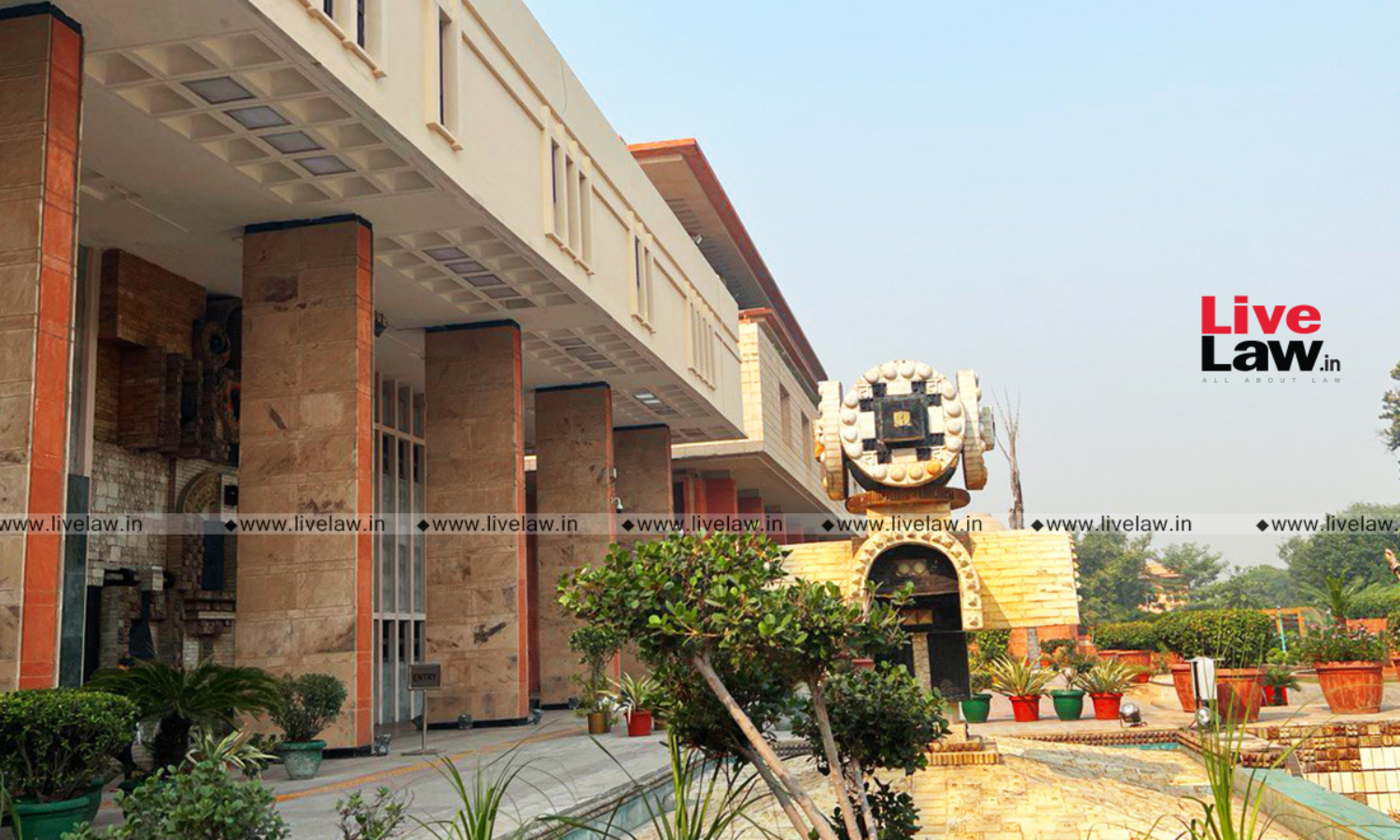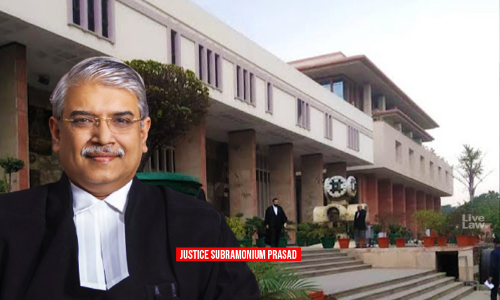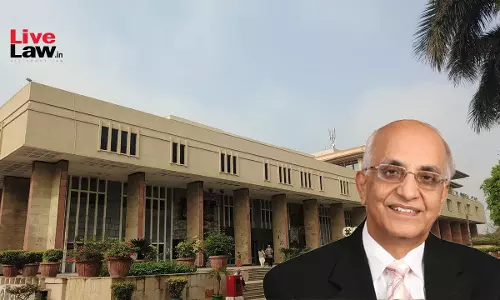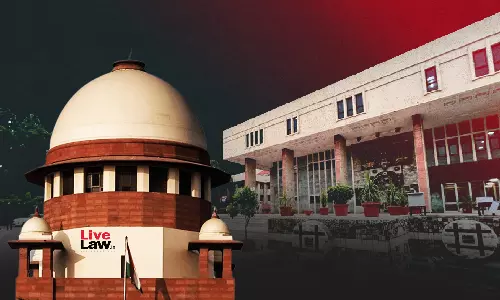Delhi High Court Invokes “Direct Benefits” And “Intertwined” Estoppel Theory To Refer Non-Signatory To Arbitration

The Delhi High Court has invoked the “direct benefits” estoppel theory and the “intertwined estoppel theory” to refer a non-signatory to arbitration. While referring the builder/developer (non-signatory) of a building to arbitration in a dispute between the owner of the flat and the maintenance agency under the ‘maintenance agreement’, the court observed that its...
The Delhi High Court has invoked the “direct benefits” estoppel theory and the “intertwined estoppel theory” to refer a non-signatory to arbitration.
While referring the builder/developer (non-signatory) of a building to arbitration in a dispute between the owner of the flat and the maintenance agency under the ‘maintenance agreement’, the court observed that its impleadment was mandated not on account of the “group of companies” doctrine but on the ground that the maintenance agency’s authority was directly derived from the developer under the ‘service agreement’ executed between them.
The High Court reckoned that the developer was deriving direct benefit from the service agreement with the maintenance agency. Further, the said service agreement was inextricably linked to the maintenance agreements containing the arbitration clause.
Therefore, both the “direct benefits” estoppel theory and the “intertwined estoppel theory” were applicable in the case to refer the non-signatory developer to arbitration, the court ruled.
The bench of Justice Sachin Datta remarked that at the stage of considering a petition filed under Section 11 of the Arbitration and Conciliation Act, 1996 (A&C Act), the court is only to arrive at prima facie finding with regard to impleadment of the non-signatory in light of the inter-linked agreements. It concluded that the petitioner had made a prima facie case of impleadment, based on the control exercised by the developer in the activities of the maintenance agency, who was a party to the arbitration agreement.
The petitioner, Gaurav Dhanuka, is the owner of various commercial units situated in certain buildings. The respondent no. 1 and 2 serve as the “maintenance agency” for the said buildings. After certain disputes arose between the parties under the maintenance agreement, the petitioner invoked the arbitration clause and filed a petition under Section 11 of the A&C Act before the Delhi High Court, seeking appointment of a Sole Arbitrator.
Dhanuka argued that apart from respondent no.1 and 2, who are parties to the maintenance agreement, the respondent no.3- M/s V3S Infratech Ltd- who is the builder/developer of the said buildings, would also be a necessary party in the proposed arbitration. This is so because respondent no.1, Surya Maintenance Agency Pvt Ltd, was appointed as the maintenance agency by the developer vide an “agreement for services” executed between the two.
To this, the 3rd respondent/ developer contended that it is not a party to the relevant maintenance agreement containing the arbitration clause. It further alleged that the maintenance agency is neither its group company nor a sister company nor a subsidiary. Thus, the ‘group of companies’ doctrine cannot be invoked to refer it to arbitration.
While perusing the “agreement for services” executed between the developer and the maintenance agency, the court reckoned that the maintenance agency performs its functions only in terms of the authorisation granted by the developer under the said agreement.
Further, under the said agreement, the developer has the power to conduct an audit to ensure proper performance of duties by the maintenance agency and has the power to terminate its services. Additionally, the agreement provided for a revenue sharing arrangement between the maintenance agency and the developer.
“Given the framework of the aforesaid agreement, it is completely untenable for the respondent no.3 (developer) to disassociate itself from the maintenance activities being carried out by the maintenance agency. It is also evident that the aforesaid agreement dated 30.06.2008 between the respondent no.3 (developer) and the maintenance agency is inextricably connected with the maintenance agreements between the maintenance agency and the petitioner no.1,” said the court.
The bench further observed that the maintenance agreement between the petitioner and the maintenance agency expressly recorded that the latter was engaged by the developer to provide maintenance and security related services.
After referring to the Apex Court’s decision in Chloro Controls India (P) Ltd. vs Severn Trent Water Purification Inc., (2013) 1 SCC 641, the court perused the facts of the case. The High Court concluded that there was a ‘direct commonality of the subject matter’ of the maintenance agreements executed between the petitioner and the maintenance agency, on one hand, and the service agreement executed between the developer and the respondent no.1, on the other hand, pursuant to which it was appointed as the maintenance agency.
“In the present case, the respondent no.3 (developer), although not a party to the maintenance agreements dated 01.11.2015 and 03.12.2010 controls the functions and activities of respondent no.1 (maintenance agency) by virtue of its agreement dated 30.06.2008 with the respondent no. 1. There is direct commonality of the subject matter of the said agreements dated 01.11.2015, 03.12.2010 and 30.6.2008. The maintenance services being provided by the respondent nos.1 and 2 to the petitioners are in terms of the aforesaid agreements dated 01.11.2015 and 03.12.2010, read with the agreement for services dated 30.6.2008,” the court said.
The bench thus ruled that impleadment of the developer in the arbitration proceedings was mandated not on account of “group of companies” doctrine but on account of the fact that the authority of respondent no.1 to act as a maintenance agency was directly derived from the developer in terms of the service agreement executed between them. Further, the said service agreement was inextricably linked to the maintenance agreements containing the arbitration clause, to which the petitioner is a party. “The agreements in question have to be read with each other to derive the respective rights and obligations of the parties,” the court added.
Referring to the Supreme Court’s decision in ONGC Ltd. vs Discovery Enterprises (P) Ltd., (2022) 8 SCC 42, the court observed that a non-signatory party can be bound to an arbitration agreement by the principle of direct estoppel, to prohibit such a party from deriving the benefits of a contract while disowning the obligations to arbitrate under the same.
The court thus concluded that both the “intertwined estoppel theory” and the “direct benefits” estoppel theory were applicable in the present case to refer the developer to arbitration.
Holding that the issue as to whether the common area maintenance charges being charged by the maintenance agency are excessive or not, cannot be decided in the absence of the developer, the court allowed the petition and referred all the parties to arbitration. The bench added that the impleadment of the developer in the arbitration proceedings would be subject to a further detailed examination by the Arbitral Tribunal, based on the submissions of the parties and the material placed before it.
Case Title: Gaurav Dhanuka & Anr vs Surya Maintenance Agency Pvt Ltd & Ors
Citation: 2023 LiveLaw (Del) 326
Counsel for the Petitioner: Mr. Rajesh Yadav, Sr. Adv. along with Mr. Gaurav Kakar and Mr. Amit Jain, Advs.
Counsel for the Respondent: Mr. Ravinder Sethi, Sr. Adv. along with Mr. Badal Dayal and Mr. Puneet Sharma, Advs. for R-1. Mr. Shafiq Khan, Adv. for R-3




